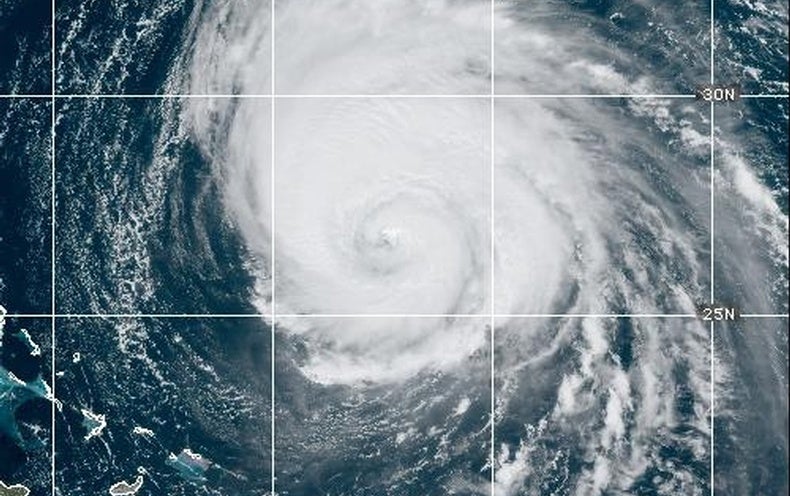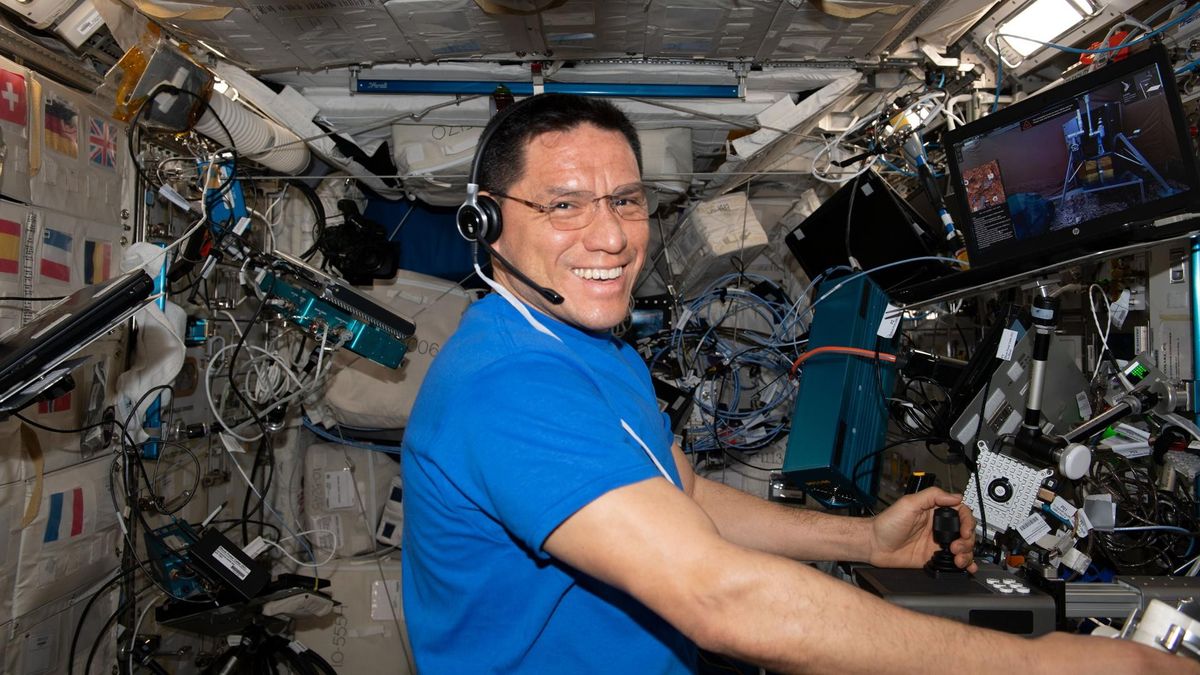Hurricane Lee has churned itself into a sprawling storm, with hurricane-force winds stretching more than 100 miles in each direction from the eye of the storm as it heads northward, far off the East Coast of the U.S.
Although Lee became a Category 5 storm quite early, when it was still about 300 miles east of the Caribbean, it has since weakened, dropping to a Category 2 hurricane as of Wednesday afternoon. The drop in wind speed is no reason to get complacent, however, says Kristen Corbosiero, an atmospheric scientist at the University at Albany. “It doesn’t mean that the storm is less dangerous,” she says. “It’s not maybe getting to that original intensity, but the strong winds are over a much larger area. So more people, potentially, if it makes landfall, can be impacted.”
Currently, Lee is hundreds of miles off the coast of Florida and projected to head north until Friday. Forecasters predict it will make landfall at the end of the week, perhaps in New England but more likely in Atlantic Canada. Because of the storm’s breadth, however, its effects could stretch along a huge swath of the coast. “It’s not just a point on a map,” Corbosiero says. “Along the East Coast, anywhere from New Jersey northward and into coastal Canada, people should be definitely watching the forecast.” She adds that individuals these areas should expect strong rip currents at the very least.
For context, Hurricane Sandy made landfall in 2012 with tropical-storm-force winds that stretched some 1,000 miles in diameter, a key factor in the hurricane’s devastation. Lee’s tropical-storm-force winds currently extend almost 500 miles across, and scientists don’t expect Lee to follow the unusual trajectory of Sandy, which made an unexpectedly hard turn to the west. “This is not a Sandy here,” Corbosiero says.
But how did Hurricane Lee get so big? A few factors contributed, Corbosiero says. Hurricanes often get larger as they head north, for one thing. Although this growth can be triggered by interactions with other systems, it also occurs naturally because of the Coriolis force, a phenomenon created by the interaction between Earth’s rotation and the atmosphere. That force is stronger at higher latitudes, Corbosiero says. So as a hurricane heads north, it takes in air with a stronger Coriolis force, causing the storm to grow.
Hurricane Lee has also experienced what scientists call an eye wall replacement cycle. Tropical storms are built around a calm spot called the “eye of the storm,” which is surrounded by an interior ring of strong thunderstorms called the eye wall. “The eye wall is where the fastest winds and the heaviest rains are,” Corbosiero says.
Scientists aren’t quite sure why, but in a strong hurricane, a second storm ring can form around the eye wall. “That new ring of thunderstorms and fast winds draws all the energy into it and robs it from the inner, the core original eye wall,” Corbosiero says. The new eye wall remains outside of the old one, causing the storm to expand. “It’s very common and can be problematic when storms eventually make landfall because then they have a very large wind field,” she says.
Eye wall replacement is just one of the phenomena Hurricane Lee has demonstrated during its week trekking across the Atlantic. Lee also underwent rapid intensification, which occurs when a storm’s winds increase by at least 35 miles per hour within 24 hours; Lee’s strongest gusts picked up about 80 mph within such a period late last week. But soon after, the storm experienced the opposite phenomenon, rapid weakening, which is less well understood by scientists. Meteorologists have also been perplexed by the forces steering Lee along its journey.
“It’s been a really interesting storm,” Corbosiero says. “I think scientifically, this will be a great storm to investigate.”














